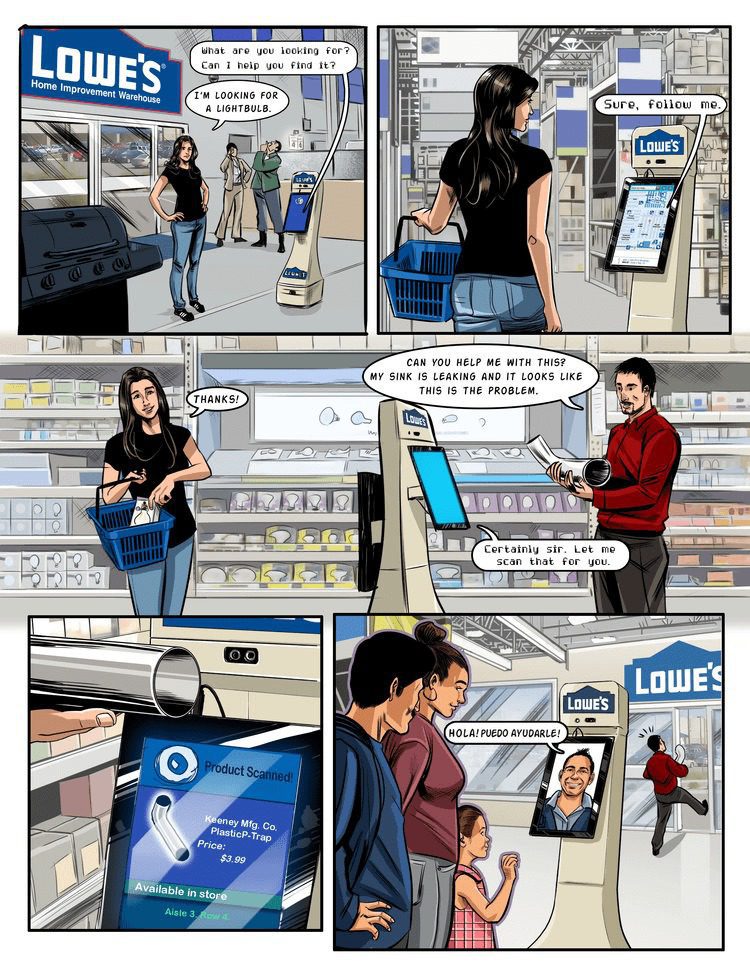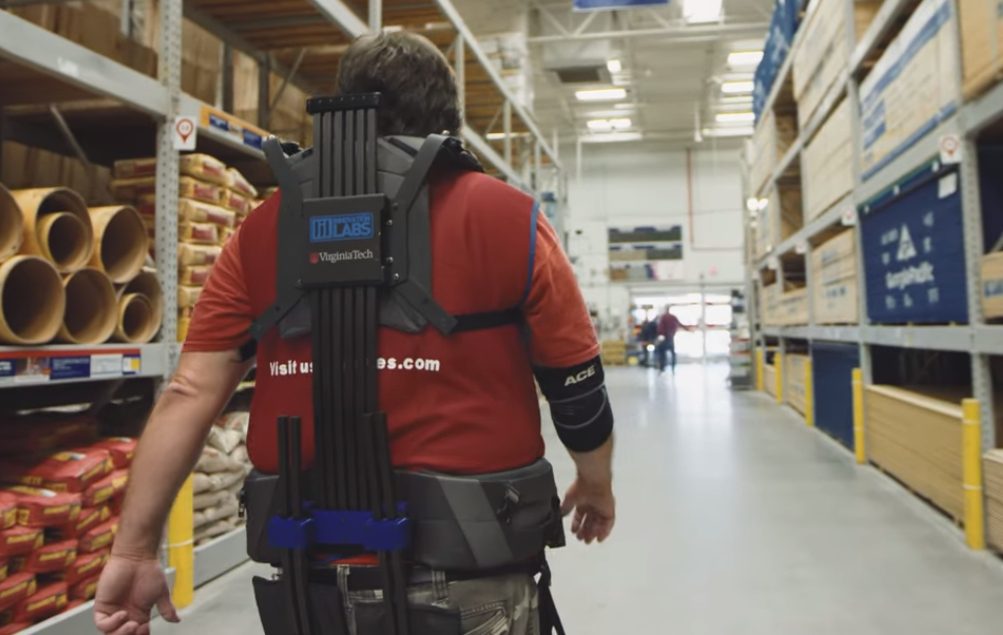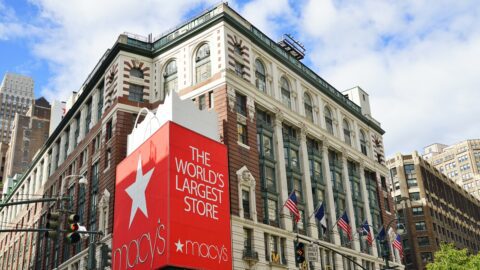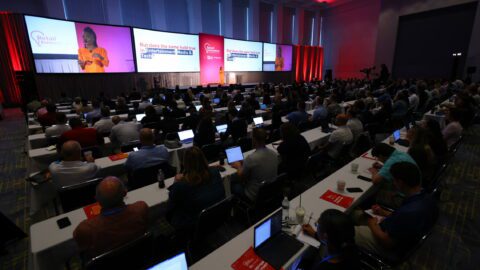As changing shopper preferences continually push the boundaries of what retailers can and should do to improve the customer experience, they also need to address the ongoing challenge: What is the best way to foster innovation?
A number of retailers have addressed the challenge of keeping pace with industry shifts by creating innovation labs, with varying degrees of success. Whatever route retailers take, they should not be afraid to take chances on new projects — even though some of them will fail.
This Retail TouchPoints special report will discuss the evolution of innovation labs, and the new reality retailers are dealing with as they tackle innovation projects:
-
Lowe’s and Neiman Marcus have remained committed to their innovation labs, and have successfully deployed new initiatives within their stores and digital presences as a result;
-
Major retailers such as Nordstrom and Macy’s have downplayed their own innovation labs and efforts in recent years as cost and time inhibit the process;
-
Retailers are discovering that innovation needs to take place in front of the customer; and
-
Culture change is a must for innovation to be effective.
Lowe’s Tells Future Narratives To Spark Innovation
A common thread with any type of innovation lab, training program or accelerator is the need to link proposed solutions to real-world retail problems. Lowe’s Innovation Labs often builds these solutions through partnerships with startups, universities, specialized professionals and other businesses. As part of its process, the lab partners with science fiction writers and illustrators to create “narratives” designed to tell stories about the future of retail.
“A lot of times we bring this to life in comic book form, and we can then work backwards to bring new ideas to life,” said Amanda Manna, Head of Narrative and Partnerships at Lowe’s Innovation Labs. “That serves two purposes: explore what we think is possible, and then stake a claim in the future we want to build, rather than waiting for it to happen to us. It gives us a tool that allows us to communicate what we’re trying to achieve very intuitively with external and internal partners so that they understand the bigger vision.”

In one of its recent endeavors, the Lowe’s team partnered with students and professors of the Assistive Robotics Lab at Virginia Tech, to test robotic exosuits in the Christiansburg, Va. Lowe’s store beginning in April 2017.
“One of the narratives that we’re working on is around how technology can enable people to have augmented superpowers that they wouldn’t have otherwise,” said Manna. “There’s a longstanding problem at Lowe’s where these jobs in our stores are very physical and demanding. We started thinking about exosuits, which had been tested with the military, as a way to give stock employees superhuman strength and endurance in the store.”
Neiman Marcus Innovation Lab Thrives On Customer-Facing Technologies
Neiman Marcus is another retailer that has continued to bring technology into the fold through its innovation lab. Scott Emmons, Head of the Innovation Lab at Neiman Marcus Group, noted that the company didn’t have any really innovative customer-facing technologies within its stores at the time he started the lab.
But Neiman Marcus has made plenty of headway on this front since opening the lab, with its most notable in-store success being the MemoryMirror, a project that was delivered from paper concept to deployment in six weeks. The MemoryMirror is designed to take still images and video of all clothing and accessories the customer tries on, allowing shoppers to capture a 360-degree view of all outfits and compare options side by side.
The retailer most recently tested and implemented the Theatro voice-enabled wearable communication device, designed to enable all retail associates to talk to each other at all times within the store.
“Unlike the old Motorola radio paradigm, this allows one-to-one, or one-to-many, kinds of conversations to go on throughout the store,” Emmons said. “It allows new sales associates to have access to the more experienced sales associates at all times when they’re working in the store, and it allows us to deliver quicker service to a customer who needs help when they’re shopping. It started off as a two-store pilot. That ended up going in all our Last Call stores, and we ended up deciding to put it on everyone after the pilot was complete.”
Emmons, a 2015 winner of a Retail TouchPoints Retail Innovator Award, credited his lab’s success to the fact that it functions within the organization, as opposed to operating as a separate unit isolated from the main business. Emmons is the only person specifically assigned to the retailer’s Innovation Lab, which gives him the leeway to work with different team members based on their expertise for a particular project.
“All of the interactions that I have are closely coupled with traditional business partners like marketing, store operations and our analytics team,” Emmons said in an interview with Retail TouchPoints. “It’s a collaborative approach. We did it as a grass roots effort when we started the lab and we specifically set out to have the lab embedded into the business. The biggest accomplishment for the lab is getting IT more directly tied into the ideation stage, instead of just sitting around waiting for these requests to come in.”
Nordstrom, Macy’s And Target Deemphasize Innovation Labs
Despite the success of Lowe’s and Neiman Marcus, many retailers that started their own innovation labs between 2011 and 2014 have pivoted away from the concept.
For example, Nordstrom shifted its Innovation Lab employees into other areas of the company, mainly its Customer Experience Center (CEC), before dissolving the lab altogether in 2015. Macy’s opened its Idea Lab in 2014, but the retailer hasn’t unveiled any initiatives credited to it since 2015, and it has remained off the radar ever since.
Target established its own Technology Innovation Center in San Francisco in 2013, but the lab’s presence has been significantly scaled back compared to other innovation programs, such as its partnership with Techstars to host retail accelerator programs for the past two years. The retailer presently is conducting a 14-week “innovation sprint” with partner BCG Digital Ventures to help select team members explore new business cases, but this development only came after the company overhauled its innovation strategy.
Costs And Time: The Two Inhibitors To Innovation
How and why did these big brands take such drastic turns from their initial plans? As budgets get tight and short-term revenue remains a high priority, these companies simply didn’t feel they had the time and money to develop and implement technology from their labs cost-effectively.
“When looking at the ability of a company to implement the technology that these innovation labs are surfacing, it takes too long,” said Pano Anthos,Founder and Managing Director of XRC Labs, an innovation accelerator. “It’s too slow, but meanwhile the cash is burning a hole in their pocket with all the staff and salaries they’re accommodating. It’s not for want of desire, or the intent of strategy or innovation teams. They’re all doing good work. It’s that whatever they produce can’t be implemented quickly enough to justify the ongoing expense of the teams. So what they do is shut down the innovation teams. They say ‘You know what? We can’t afford them.’”
David Mathews, Managing Director at REVTECH, a mentor-driven accelerator program, also noted that many of the innovation labs still in operation seem to over-rely on piloting projects instead of figuring out how to hasten the implementation process.
“There’s just no margin for error,” Mathews said in an interview with Retail TouchPoints. “Retailers might be under competitive pressures and have thin margins, and it seems like there’s just not room for experimentation or risk.”
Innovation Cannot Be Behind Closed Doors
Regardless of the risks involved, retailers must establish some sense of where innovation should take place while still being in view of the customer. As part of an innovation strategy, retailers should designate specific stores to house new pilot tests, as both Lowe’s and Neiman Marcus do. These stores are then able to generate customer feedback on the true success of the tested platforms.
Additionally, whether companies focus on creating an internal innovation lab or partnering with an accelerator and incubators, there’s often going to be internal resistance to change. And with more innovation labs being seen as a massive expense that may be more than they are worth, retailers are going to have to carefully select where they identify their most pressing need for change.
“Part of the job is that you have to be a good salesperson,” Emmons said. “By that I mean you have to explain why the change is good and why it’s worth the effort to go through the process. You can’t leave it behind once the change is made, because there’s a tendency for folks to try to revert back. You have to understand there’s going to be ongoing training and ongoing interaction. It takes time for that change to settle in and become the norm.”
Retailers seeking to drive this change also may need to onboard people with skills beyond what the present set of employees have, particularly those that understand data science. These companies often require a culture and personnel change, filled with people that have built a project without a lot of corporate support. Anthos of XRC Labs noted that these employees need to be given more leeway to fail if they ever want to succeed in the long run.
“The culture has to change, and it has to change from the inside,” Anthos said. “The only way to change on the inside is to bring people in from the outside — or you foster people who are already inside but aren’t already thinking like everyone else. That doesn’t always happen. It’s a big cultural issue, but I think it’s solvable. Jeff Bezos said it, and it’s a brilliant statement. ‘If you’re not willing to fail, then you’re not really willing to test.’ Because a test means that at least 50% of the time — probably more — you’re going to fail at it.”
Retailers today have a choice — create their own innovation lab or work with a partner to consult and assist the innovation process — but either way, they can’t be afraid to fail. Regardless of where they allocate these resources, these retailers can’t afford to be intimidated by innovation. They must take the necessary steps to keep up with, and even stay ahead of, their competitors — and their shoppers.













